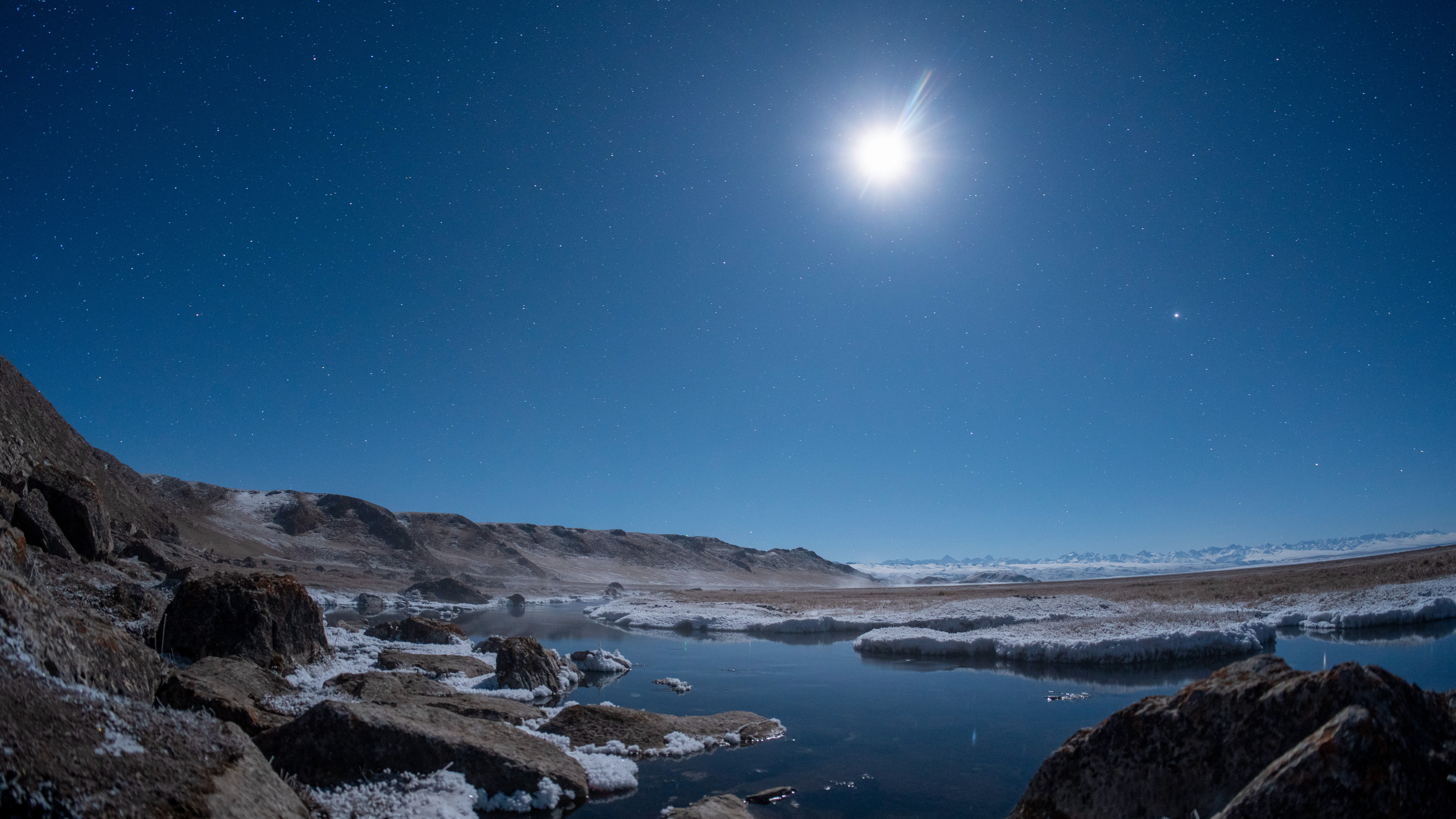Geminid meteor shower spawned by violent asteroid smashup
The peaceful Geminid meteor shower arose in violence.

A spectacular meteor shower has an origin story in a "violent, catastrophic event," a new study suggests.
Meteor showers usually come from comets, icy bodies sometimes called "dirty snowballs" that circle the solar system. The Geminid meteor shower, or Geminids, however, come from an asteroid or space rock known as 3200 Phaethon. Every December, the Earth runs through the dust stream left behind by Phaethon and the tiny grains provide a light show high in the atmosphere.
The Geminids, one of the best of the year, likely arose after 3200 Phaethon underwent "a high-speed collision with another body or a gaseous explosion, among other possibilities," NASA officials wrote on Wednesday (June 14).
NASA's Parker Solar Probe mission, which usually looks at the sun from up close, provided the keystone bit of evidence showing how the intense meteor shower came to be.
Related: Meteor showers 2023: When is the next one?
"It's unusual that this [shower] seems to be from an asteroid," said Wolf Cukier, a junior at Princeton University who led the research, in a university statement. The dust stream also has an oddity: It circles the sun slightly outside the orbit of Phaethon, based on another recent study with Parker images of the Geminids led by Karl Battams of the Naval Research Laboratory.
Rocks usually aren't affected by heat when flying at Phaethon's distance from the sun, even though it goes inside the orbit of Mercury. This physics problem creates a puzzle for astronomers. "As it flies by the sun, it seems to have some kind of temperature-driven activity. Most asteroids don't do that," Jamey Szalay, a research scholar at Princeton and study co-author, said in the NASA statement.
Get the Space.com Newsletter
Breaking space news, the latest updates on rocket launches, skywatching events and more!
Szalay is also a guest investigator on Parker, which periodically swings extremely close to the sun to look at the origin of the solar wind and the resulting space weather (auroras and magnetic activity) its charged particles generate high in Earth's atmosphere.

The sun, since it has a large well of gravity, attracts many comets and asteroids passing it by. Parker thus ends up being useful in looking at the dust grains these small bodies leave behind and shedding light on where they came from.
Parker is not designed to count or characterize dust particles, as no such instruments exist on board. That said, it's constantly struck by dust bits that create electrical signals.
The resulting little puffs of charged gas, or plasma clouds, generate information that the spacecraft's Fields instruments suite can see. (Fields is designed to look at electrical and magnetic events the sun generates, but it is sensitive enough to pick up the smaller bursts each dust grain creates on Parker.)
In the study, Cukier and Szalay modeled the formation of the dust stream left behind by 3200 Phaethon, based on Parker's data. They considered a range of scenarios, ranging from less violent (the dust gradually drifting away from the asteroid) to a more violent departure sparked by a collision or explosion (causing the dust to have a relative velocity of 0.6 mph or 1 km/h to Phaethon).
The three models they produced showed the dust stream likely formed from the most violent of the scenarios, as that prediction most closely matched what Parker observed in space.
Cukier, who graduates this year, added he has always been attracted to the sky and that learning about the Geminids just requires looking up. "Planetary science is surprisingly accessible," he said.
A study based on the research was published today (June 15) in the Planetary Science Journal.
Join our Space Forums to keep talking space on the latest missions, night sky and more! And if you have a news tip, correction or comment, let us know at: community@space.com.

Elizabeth Howell (she/her), Ph.D., was a staff writer in the spaceflight channel between 2022 and 2024 specializing in Canadian space news. She was contributing writer for Space.com for 10 years from 2012 to 2024. Elizabeth's reporting includes multiple exclusives with the White House, leading world coverage about a lost-and-found space tomato on the International Space Station, witnessing five human spaceflight launches on two continents, flying parabolic, working inside a spacesuit, and participating in a simulated Mars mission. Her latest book, "Why Am I Taller?" (ECW Press, 2022) is co-written with astronaut Dave Williams.
